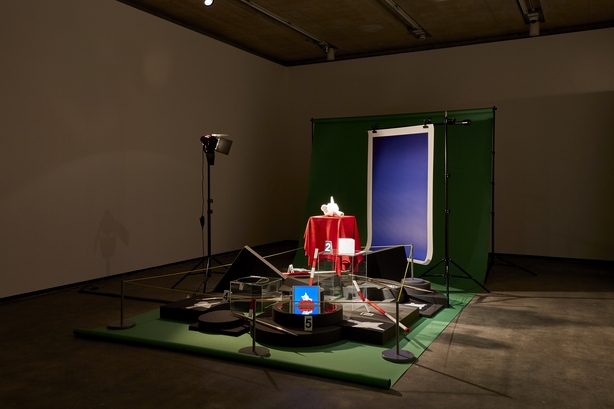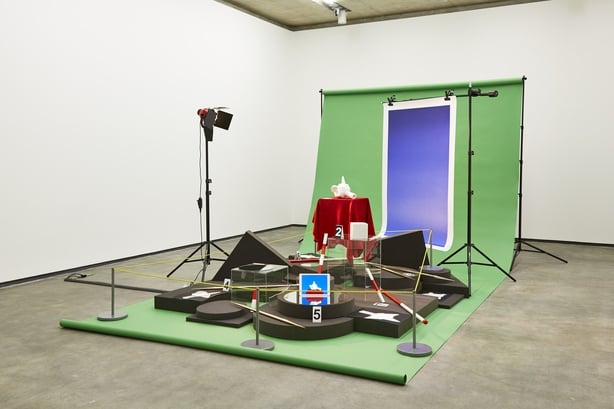'Contemporary art is a place in our culture that invites and respects a range of responses from its audiences. Sometimes it isn’t easy. It invites you to take a leap, but the rewards for the viewer can be profound.' - artist Barbara Knezevic previews the forthcoming Dublin Gallery Weekend.
Dublin Gallery Weekend is a new addition to the visual arts calendar. This year is the second edition and will see the participation of 36 galleries and the staging of over 50 auxiliary events from Friday 25th to Sunday 27th November, 2016.
It is similar in style and ambition to events in other cities, in particular it calls to mind Berlin Gallery Weekend, a long weekend of co-ordinated gallery openings in Berlin that has proved so successful that it is now in its 12th year. There are many commercial fairs such as Frieze in London, and Art Basel in its various locations and then there are exhibitions like the Venice Biennale, Documenta in Kassel, and Glasgow International to name but a few.

The Last Thing on Earth, 2016, installation shots from The MAC, Belfast, courtesy the artist.
Notably, some of these events take place in cities that are not usually as frequented by international visitors. Documenta is held every five years in Kassel, Germany with a curated selection of international artists exhibiting work in the museums, galleries and public spaces across the city. It is a very well-regarded and eagerly anticipated exhibition. In 2012, I was fortunate to visit Documenta, and that year it attracted a staggering 900,000 visitors to a town of only 200,000 inhabitants during the three month exhibition. Such is the power of contemporary art and the mobility of its audience.
There is an immense amount of energy, bravery and talent being harnessed in this city and channeled into making, exhibiting, writing about, curating and loving contemporary art. We are fortunate to have artists working in this city across a spectrum of practices and subject matter at the very highest level.
I mention Kassel and Documenta because it demonstrates that art has the potential to mobilise and create excitement locally and to attract an international audience to smaller, European cities. Though clearly very different in nature and scope to Documenta, Dublin Gallery Weekend would seem to be aimed at entering Dublin into this busy calendar of contemporary art happenings.
From an artist's perspective, positioning Dublin as a city to visit specifically for the purpose of attending Gallery weekend is welcome. Artists based in Dublin and across Ireland already contribute to the international visual arts conversation. But there is no doubt that an event such as this can only add to opportunities for artists by bringing more eyes from home and abroad to the work.

The Last Thing on Earth, 2016, installation shots from The MAC, Belfast, courtesy the artist.
There is an immense amount of energy, bravery and talent being harnessed in this city and channeled into making, exhibiting, writing about, curating and loving contemporary art. We are fortunate to have artists working in this city across a spectrum of practices and subject matter at the very highest level. I feel energized and inspired by the artists and other arts practitioners working around me all the time and while it is a relatively small group the diversity and rigor of the work being made here is remarkable.
The city cannot survive as a place worth living in without art. If artists have nowhere to work in Dublin that is affordable, stable and not subject to the vagaries of an aggressive property market then we will be without the intelligence, criticality, beauty and energy that art contributes to the fabric of the city.
The world-class work that is taking place here is in no doubt. However, it takes place against the backdrop of some challenges. Apart from funding (in Ireland we fund the arts at a greatly reduced level compared to our European neighbours) I think the most pressing problem for artists is space. Artists based in Dublin are facing a studio space crisis. The closure of Broadstone studios last year that evicted over 30 of the city's best artists to enable the development of luxury apartments in Dublin 2 is a familiar story. Artists often take spaces no one wants, the cultural energy revitalizes a part of the city and gentrification swiftly follows, driving out the artists as prices soar.
The city cannot survive as a place worth living in without art. If artists have nowhere to work in Dublin that is affordable, stable and not subject to the vagaries of an aggressive property market then we will be without the intelligence, criticality, beauty and energy that art contributes to the fabric of the city. This problem should not be underestimated.

The Last Thing on Earth, 2016, installation shots from The MAC, Belfast, courtesy the artist.
Contemporary art is a place in our culture that invites and respects a range of responses from its audiences. Sometimes it isn’t easy. It invites you to take a leap, but the rewards for the viewer can be profound. Of course, the objects of art that artists make, the films, sculptures, paintings, photographs, prints, performances and drawings all continue to exist quietly without a public to see them. They sit patiently and wait. It is the viewer who activates the waiting artworks and creates the next part of the conversation.
Come and see.
Barbara Knezevic is participating in Dublin Gallery Weekend which takes place from Friday 25 to Sunday 27 November - more details (plus a venue map) here.

